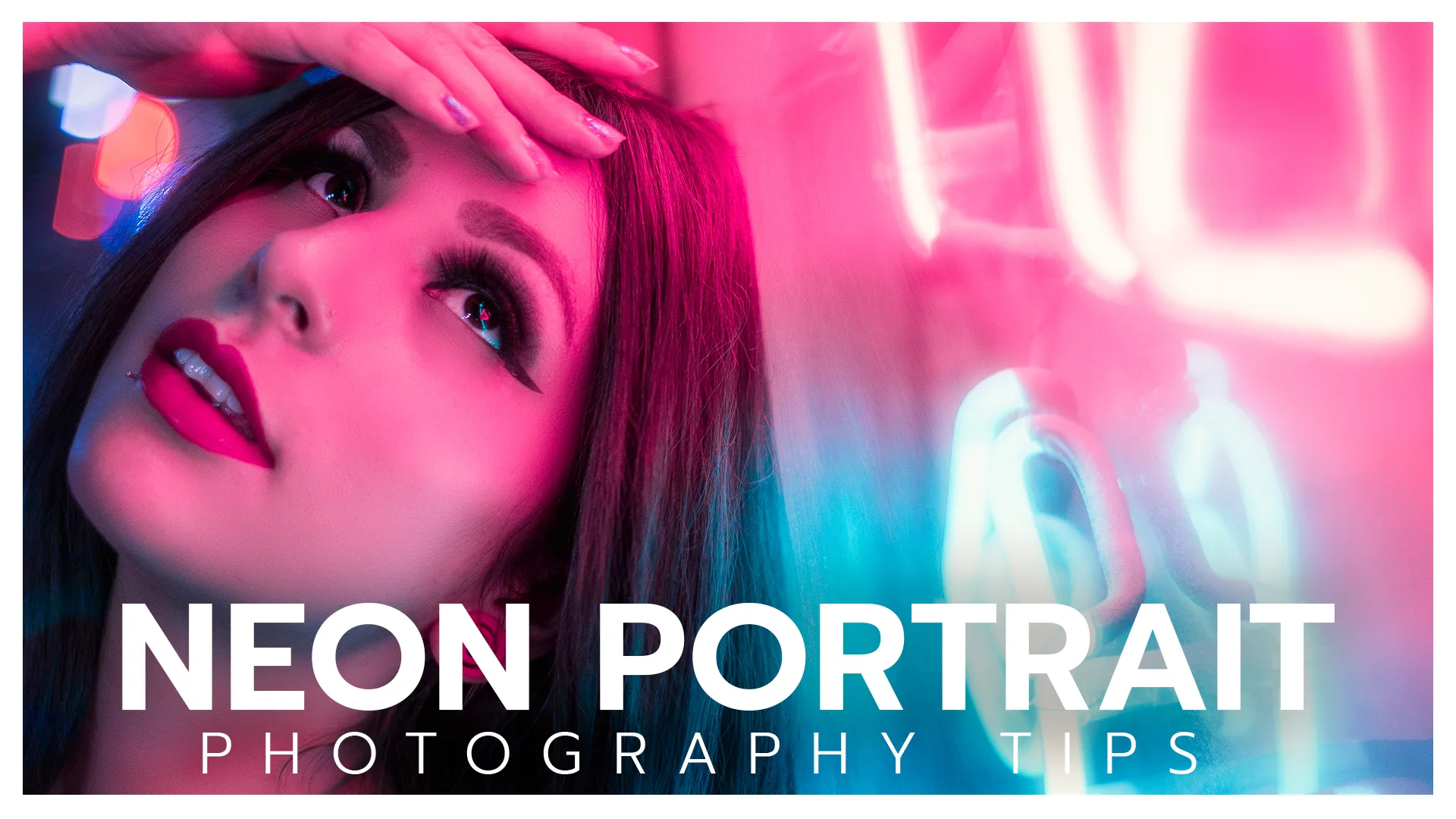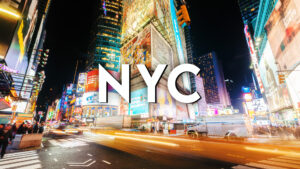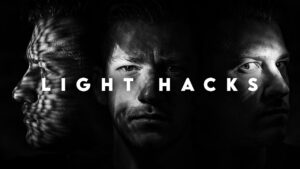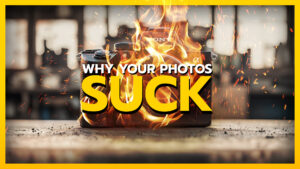What is Neon Portrait Photography?
Neon signs give off a unique light that can make for some stunningly colorful, glowing photographs. But the same properties that make them look magical to the human eye, can make them difficult to photograph.
In the video below, I’ll be showing you how to utilize neon lights to create unique portraits that transport your subject to another world. I’ve included some behind the scenes footage from a few of my actual neon portrait shoots, and I have some of the final images posted in this blog.
My Top 10 Neon Portrait Photography Tips
1. Complementary Colors
Neon lights come in a variety of colors. I’ve found that using complementary colors is a great way to introduce color contrast in your photographs. Blue & Orange, Purple & Yellow, Red & Green — all opposites on the color wheel that tend to create the best contrasting hues.
As a quick side note, actual Neon gas creates a reddish-orange glow. Various gasses such as Helium, Argon and Xenon, are used to create other “neon” sign colors like Orange, Purple and Blue. To avoid any needless confusion in this article, we’ll still refer to all multi-colored gas lights as “neons.”
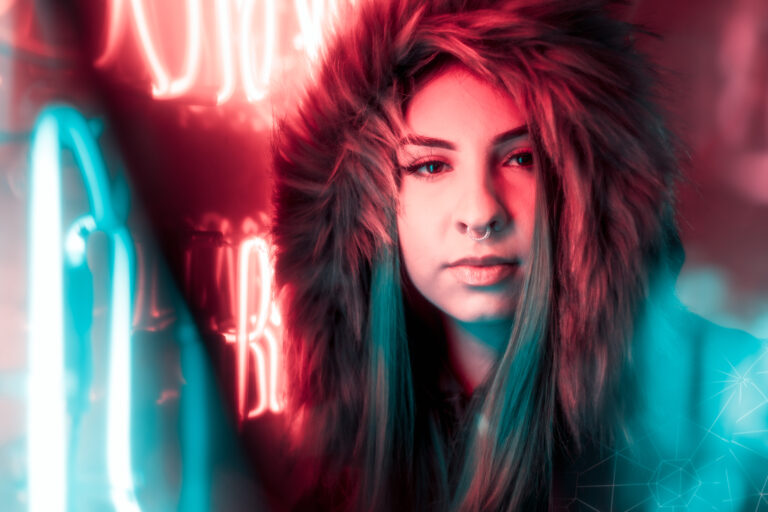
2. Yellow Neon Lights
As a personal rule of thumb, I avoid yellow neon signs. Using any single-colored sign (just like a single gelled light source) will appear that your White Balance is incorrect. Yellow, even when combined with a complementary color can be tricky to White Balance, and I’ve never been a fan of the result. But go experiment for yourself; you’ll quickly find your favorite (or least favorite) hues to work with.
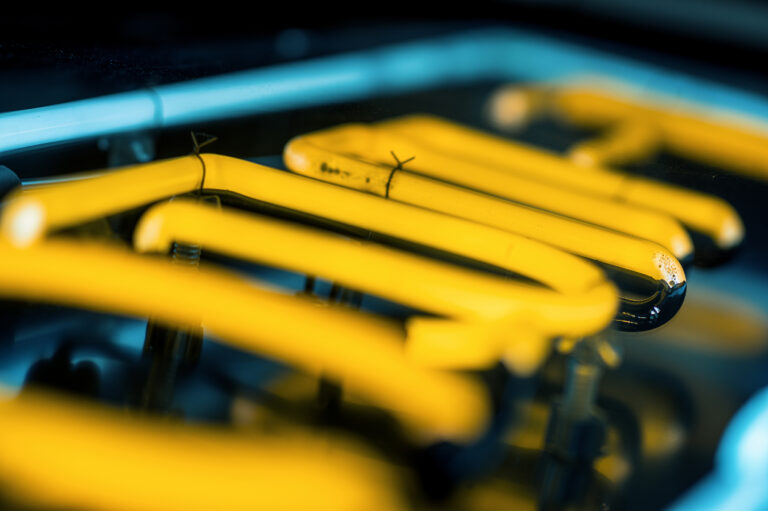
3. Expose for Your Subject
Your subject should undeniably be the most important part of your photograph, whether that’s a mountain, dog, coffee cup, or in the case of a portrait, your person. Unfortunately there are some “YouTube Photographers” out there giving the advice that you need to be underexposing your portraits by a ridiculous 4-5 stops in order to preserve your highlights (Highlights that they will end up clipping in post-processing later anyways).
When you are photographing in a studio, do you meter for your subject’s face or for the bulb of your strobe? The answer seems fairly obvious to me.
While I’m not opposed by underexposing by maybe 1 stop, don’t take this to the extreme. This will save you from grainy images and needing to use excessive noise reduction later on.
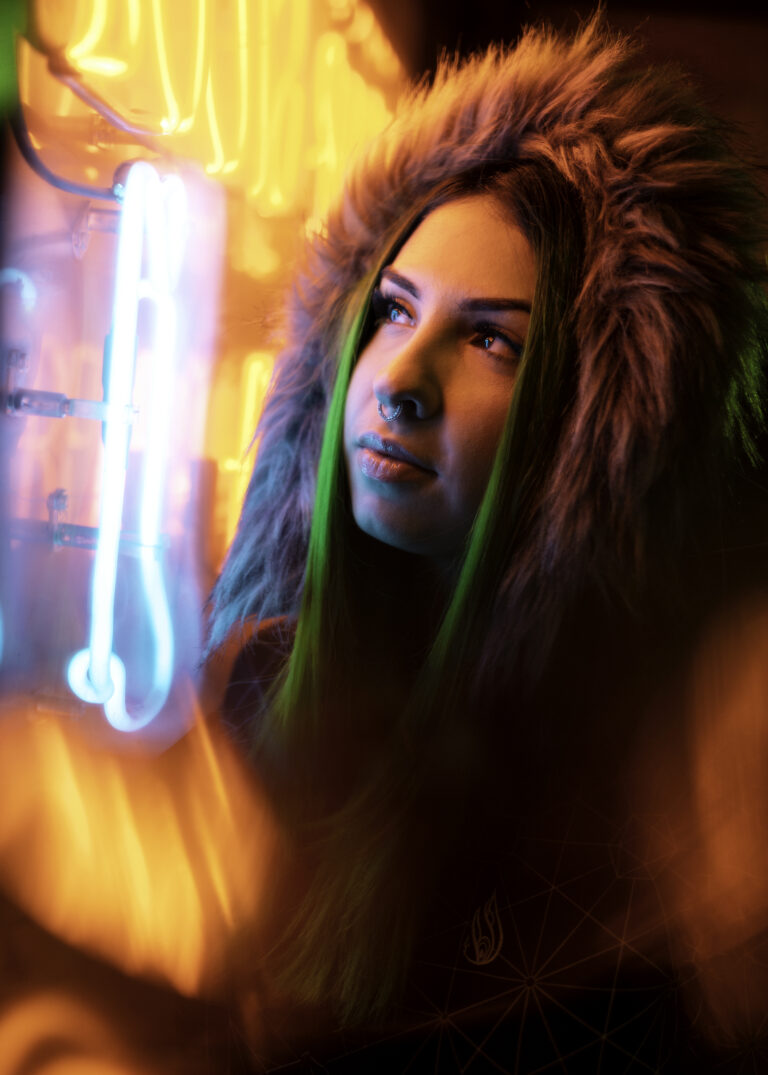
4. Don’t Clip Your Highlights, Add Light
Hey guy, this tip goes against what you just said in tip #3, right? Not necessarily. More than anything, pay attention to your histogram during your shoot.
If there is such a difference between your light source and your subject, this could be a great opportunity to add additional light to your scene. That can be as simple as a reflector to fill in shadows or even a small strobe or speedlight.
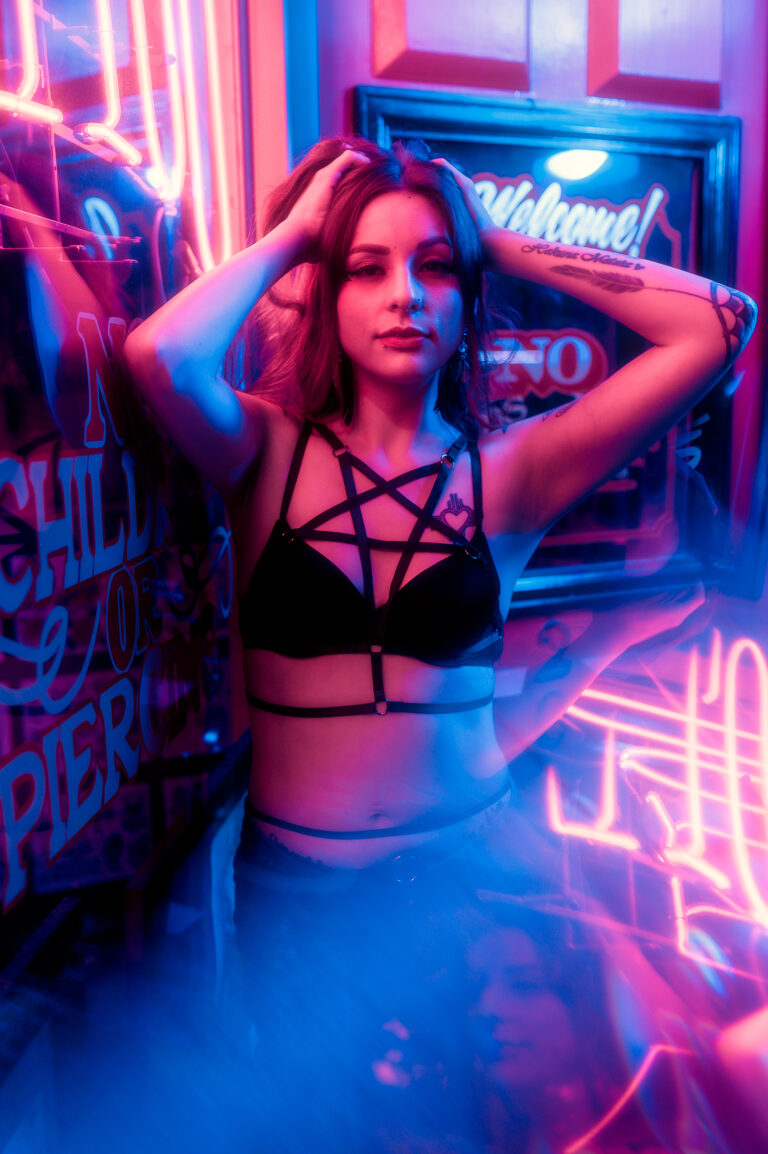
5. Eyes In Focus
When the eyes are in focus, your portrait is in focus. Conversely, when your subject’s eyes are out of focus, the whole image is out of focus. We all know the saying, “the eyes are the windows to the soul,” and that’s especially true for portraits.
Take the time to ensure your subject’s eyes are tack sharp before snapping that shot. Nothing is worse than getting home and realizing all of the photos are focused on the tip of the nose or the ears.

6. Don’t Kill Your Highlights in Post
This tip is all about Post Processing. I see a ton of new photographers (based on the advice of a few Youtubers) jump into their post processing software of choice, and their first step is to drag the highlight slider to -100.
The reason this is so detrimental to Neon Photography, is that the data containing your neon glows sits in your highlights. You’ll see that by playing with your highlight slider (I’ll use Lightroom for this example), you’re adjusting how much glow your sign is giving off. Why shoot beautifully glowing neon signs just to kill any life it gives, in post?
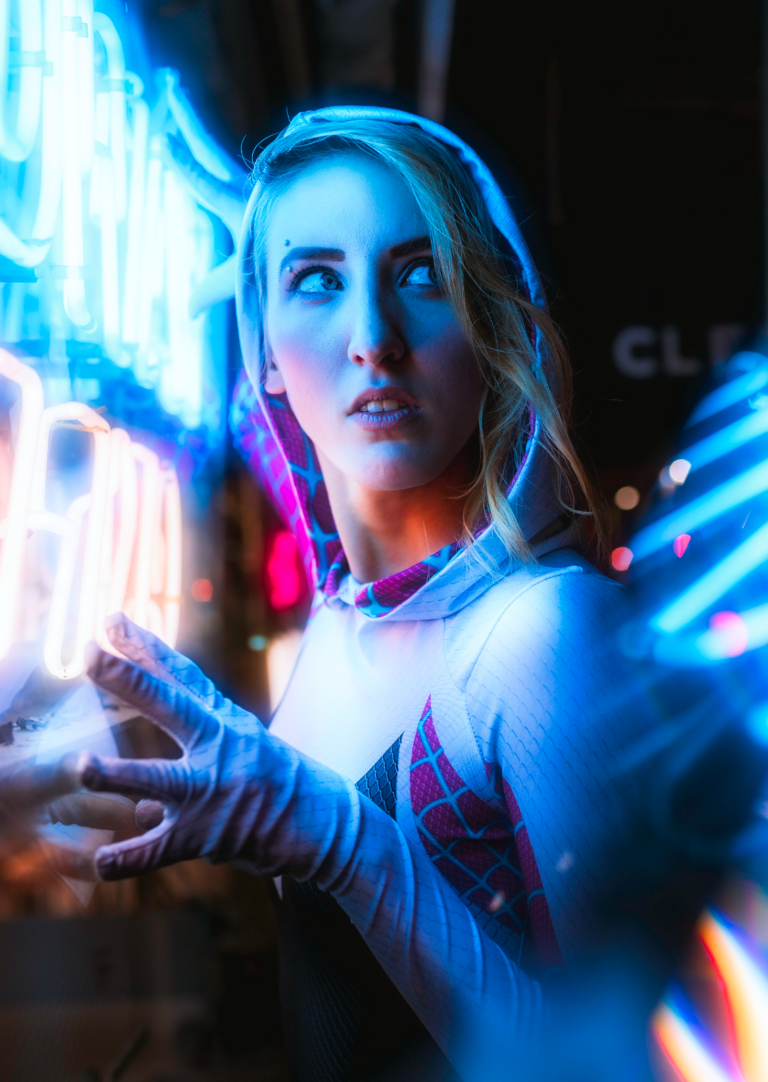
7. Interaction with the Light
The closer you can get your subject to the light, and the more they interact with the light, the better your neon portrait will look. It’s a general rule in photography that the closer your light is to the subject, the softer the light will be. As you can see from the example in the video, the more your subject “interacts” with the light and poses with the light in mind, the more colors wash over your subject in unique ways.
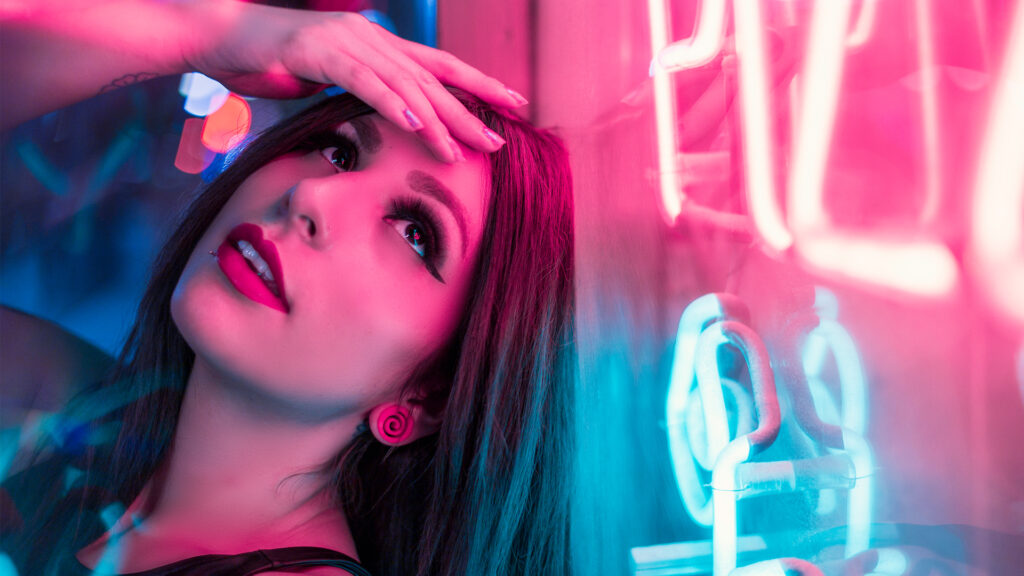
8. Shutter Speed
Similar to other light bulbs, neon signs flicker; usually at a high enough frequency that it’s a continuous stream of light to the human eye. But not to your camera! Try photographing a neon sign at a shutter speed of 1/500th, and you’ll see your camera produces some ugly flicker, usually represented by big dark bands across your photos.
As a general rule of thumb, I try to keep my shutter at 1/125th or lower. This may vary slightly depending on the sign’s refresh rate, but it’s a good place to start. You may need to utilize a tripod, monopod or sturdy wall to help stabilize your camera if you don’t have a steady hand.
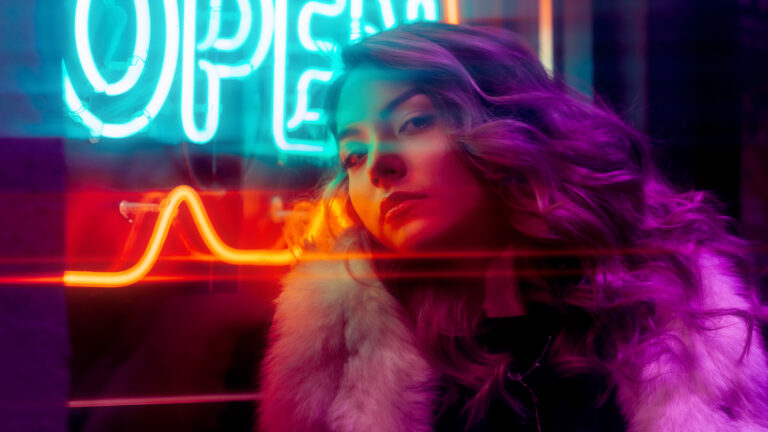
9. Don’t Over Edit Your Portrait
Don’t kill your neon portrait photos in post. By no means am I saying don’t tone your portraits. I see this trend among many photographers: Highlights -100, Shadows +100, Clarity +100, then cover up all the noise you just created with Luminance Noise Reduction +100.
All RAW photos inherently need some toning, but take care not to process the life right out of an already beautiful neon portrait. Take a step back, come back later with fresh eyes and ask, “did I make this image look better or worse?”
If you want to see my process, you can watch my video tutorial on How I Edit My Neon Portraits in Lightroom.
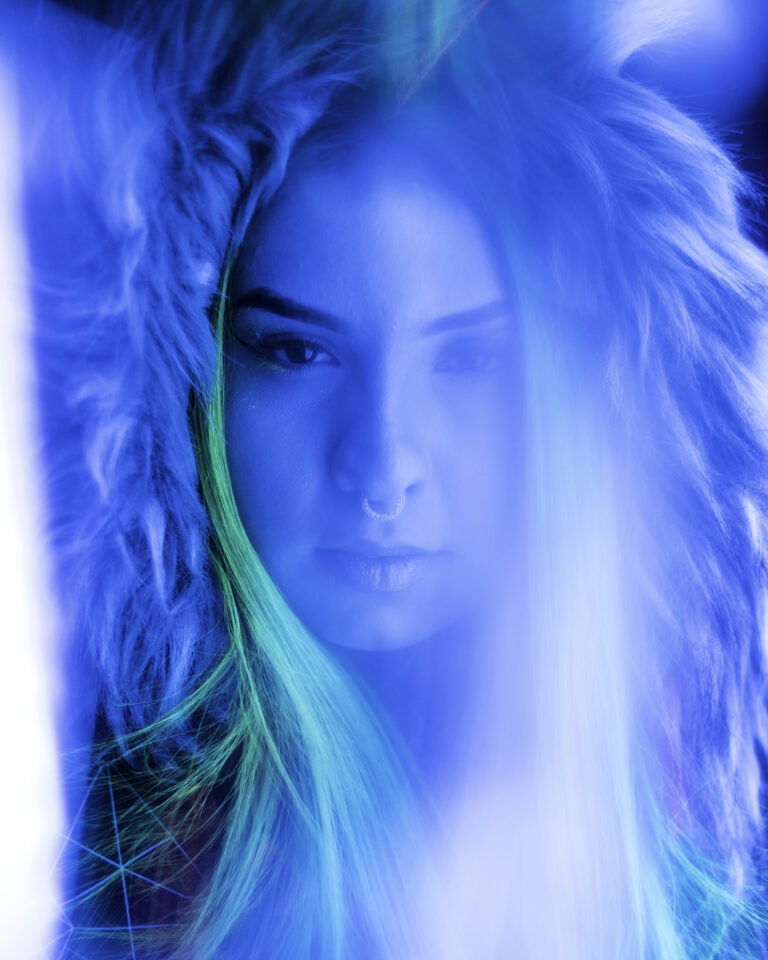
10. Fast Primes
We all love our fast prime lenses! Shooting at wider aperture values like f/1.4, f/1.8 or f/2, will allow the most light through your lens, to your sensor (or film). And remember, the more light you’re getting through your lens, the lower your ISO will need to be, which means less-noisy photos!
Shallow depth of field also creates a soft, dreamy look that’s great for emphasizing the glow of neon lights. I find that my personal “sweet spot” is around f/2 – 2.8. Sure my lens may not be at its sharpest, but with proper focus (Tip #5) and a steady hand, it will be as sharp as we need. As long as the eyes are in focus, the rest of the background can blur out into nice bokeh to complement the neon.
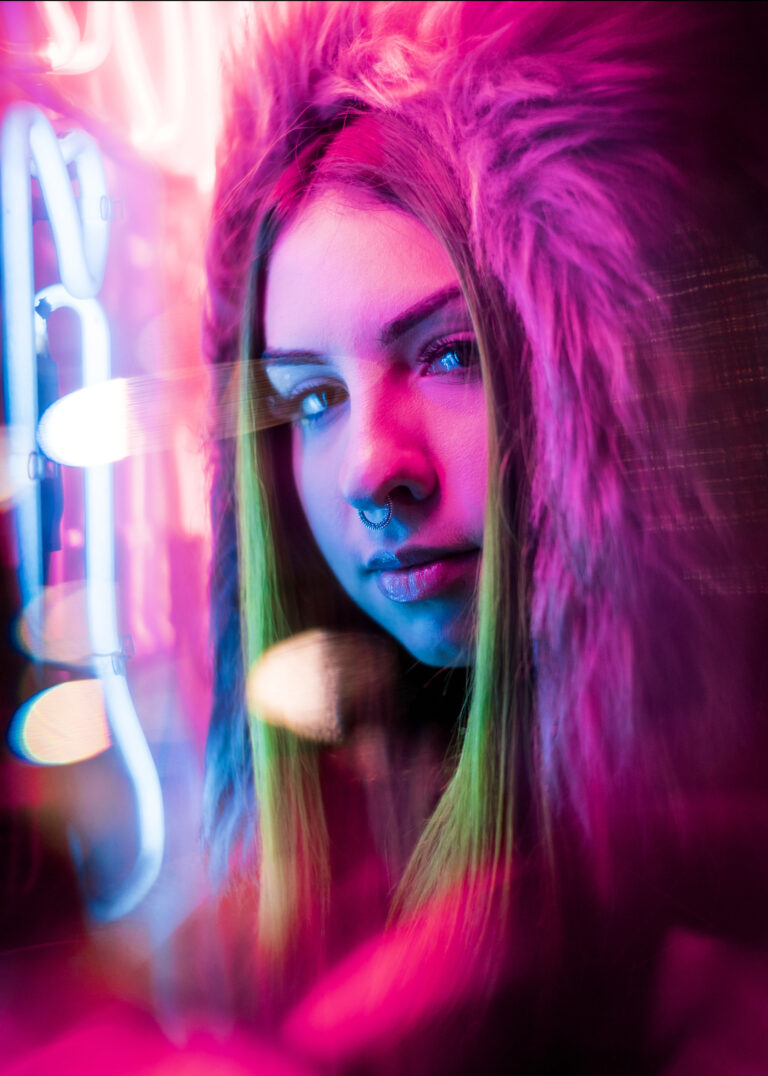
Bonus Neon Portrait Photography Tip!
The portrait lens trifecta. This is what I call my Nikon 35mm, 50mm and 85mm prime lenses. If I’m going on a portrait shoot, these are the minimum lenses that I will have in my bag.
As we discussed in the previous tip, fast primes lenses are great for allowing the most light into your camera. I typically use the 35mm for shooting head-to-toe full body shots. For waist up portraits, I’ll throw on the 50mm, which will give me a bit shallower depth of field and some great bokeh. I use the big gun (85mm f/1.4) for tight head & shoulders shots, in instances where I want to blur everything behind my subject into oblivion.
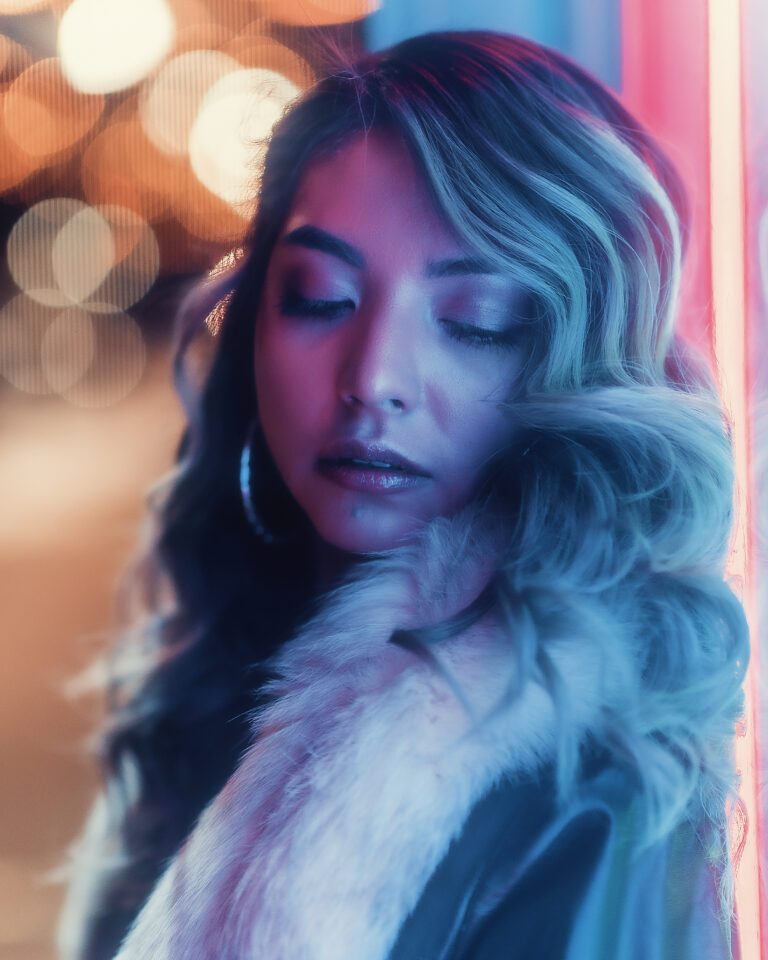
Neon Portrait Photography Wrap-up
Those are my top 10 Tips for capturing better neon portrait photographs If you have any tips or want to suggest a blog post/video, let me know in the comments! You can also check out one of my behind the scenes neon portrait shoots below. Be sure to check out my latest LUTS, Lightroom Presets and Photography Assets from my Run N Gun Shop!
Until next time, get out & go shoot!

